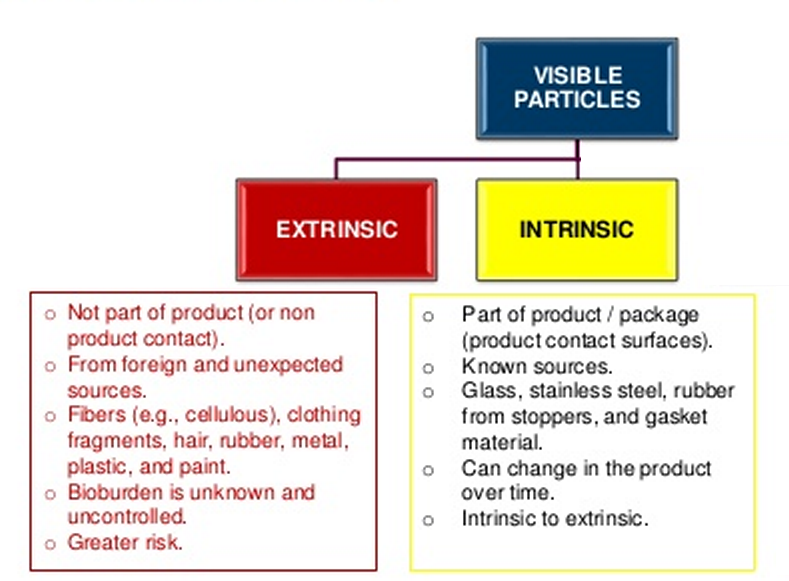Challenges And Advancements In Automated Visual Inspection Of Lyophilized Drug Products

Table of Contents
Challenges in Automated Visual Inspection of Lyophilized Products
The visual inspection of lyophilized products presents unique difficulties for automated systems. The inherent variability in the appearance of lyophilized cakes, combined with the need for high-throughput inspection, creates significant hurdles for achieving accurate and reliable defect detection.
Variability in Lyophilized Product Appearance
Lyophilization, or freeze-drying, is a complex process that can result in variations in the appearance of the final product. These variations pose significant challenges for automated visual inspection systems.
- Cake Appearance: Cracks, fissures, and collapse are common defects that can impact product quality and stability. Detecting these variations reliably requires sophisticated image analysis techniques.
- Color Variations: Subtle differences in color can indicate inconsistencies in the lyophilization process or formulation. Consistent and accurate color detection is crucial, yet challenging to achieve automatically.
- Size and Shape Variations: Variations in the size and shape of the lyophilized cake can also affect the accuracy of automated inspection.
The difficulty stems from setting consistent thresholds for acceptable versus unacceptable variations. The complex nature of the lyophilization process and the influence of formulation factors on cake appearance make it challenging to define clear-cut acceptance criteria. Advanced image processing algorithms, capable of handling this inherent variability, are essential for reliable automated detection.
Dealing with Reflections and Shadows
Reflections from vial surfaces and shadows cast by the product or vial geometry significantly interfere with accurate defect detection. These artifacts can mask defects, leading to false negatives and compromising the integrity of the inspection process.
- Vial Reflections: Curved vial surfaces can cause reflections that obscure the lyophilized cake, making defect detection difficult.
- Shadow Effects: Shadows cast by the product or vial geometry can create dark areas that mimic defects or obscure actual defects.
Specialized lighting techniques are crucial to mitigate these issues. Polarized light and structured illumination can significantly reduce reflections and shadows, enhancing the contrast and visibility of defects. Advanced image processing techniques are then employed to further compensate for residual lighting artifacts, improving the overall accuracy of the automated visual inspection system.
High Throughput Requirements and Speed Limitations
Pharmaceutical manufacturing demands high-throughput inspection to maintain production efficiency. Automated visual inspection systems need to process vials quickly without compromising the accuracy of defect detection. This presents a significant challenge: the need to balance speed and accuracy.
- High-Speed Imaging: Faster camera systems and parallel processing algorithms are crucial for high-throughput inspection.
- Optimized Inspection Pathways: Efficiently designed inspection pathways minimize unnecessary movements, maximizing throughput.
The development of faster camera systems, sophisticated parallel processing algorithms, and optimized inspection pathways is crucial. These advancements aim to significantly improve throughput without sacrificing the accuracy and reliability of the automated visual inspection process. Real-time inspection capabilities are essential for seamless integration into high-speed production lines.
Advancements in Automated Visual Inspection Technology
Significant advancements in image processing algorithms, hardware, and data analytics are driving improvements in the accuracy, speed, and efficiency of automated visual inspection of lyophilized drug products.
Advanced Image Processing Algorithms
Machine learning (ML), deep learning (DL), and artificial intelligence (AI) are revolutionizing automated visual inspection. These technologies are significantly improving defect detection accuracy and reducing false positives.
- Convolutional Neural Networks (CNNs): CNNs excel at identifying patterns and features in images, making them ideal for detecting subtle defects in lyophilized cakes.
- Improved Pattern Recognition: Advanced algorithms enhance the system’s ability to recognize complex patterns and classify defects with greater precision.
These algorithms are continuously refined and improved, leading to more robust and accurate defect detection capabilities. The application of these techniques allows for the identification of subtle defects that may be missed by traditional image processing methods.
Improved Hardware and Imaging Techniques
Advancements in hardware and imaging techniques are playing a vital role in enhancing the capabilities of AVI systems. Higher resolution cameras, faster frame rates, and advanced lighting systems are improving image quality and throughput.
- High-Resolution Cameras: Higher resolution cameras provide more detailed images, facilitating the detection of finer defects.
- Multispectral and Hyperspectral Imaging: These techniques capture images across multiple wavelengths, providing additional information that can aid in defect detection.
- 3D Imaging: 3D imaging provides a more comprehensive view of the product, enabling the detection of defects that might be missed by 2D imaging.
- Robotic Automation: Automated handling systems enhance efficiency and minimize human intervention.
The integration of these advanced imaging techniques significantly enhances the detection capabilities and overall effectiveness of the automated visual inspection systems.
Data Analytics and Process Optimization
Data analytics plays a crucial role in optimizing the entire lyophilization and inspection process. By analyzing data from the AVI system, manufacturers can identify areas for improvement and predict potential issues.
- Process Monitoring: Real-time data analysis allows for continuous monitoring of the lyophilization and inspection processes.
- Predictive Maintenance: By analyzing data trends, potential equipment failures can be predicted and addressed proactively.
- Improved Process Control: Data insights can be used to fine-tune the lyophilization process, reducing the occurrence of defects.
- Integration with other QC data: Combining AVI data with other quality control data provides a more holistic understanding of product quality.
The integration of data analytics capabilities enables proactive problem-solving, leading to improved process control, reduced defects, and enhanced overall product quality.
Conclusion
Automated visual inspection of lyophilized drug products is critical for ensuring product quality and patient safety. While challenges remain in handling the variability of lyophilized cakes and achieving high throughput, advancements in image processing algorithms, hardware, and data analytics are driving significant improvements. By adopting these new technologies and continuously refining inspection methodologies, the pharmaceutical industry can ensure consistent quality and meet the ever-increasing demands for efficient and reliable automated visual inspection of lyophilized drug products. Investing in advanced automated visual inspection solutions is essential for maintaining high standards and optimizing the lyophilization process. Don't hesitate to explore the latest advancements in automated visual inspection to ensure the highest quality for your lyophilized drug products.

Featured Posts
-
 Crazy Rich Asians The Series Your Guide To The Upcoming Adaptation
May 12, 2025
Crazy Rich Asians The Series Your Guide To The Upcoming Adaptation
May 12, 2025 -
 Lily Collins Charlie Mc Dowell And Daughter Tove Precious Family Moments
May 12, 2025
Lily Collins Charlie Mc Dowell And Daughter Tove Precious Family Moments
May 12, 2025 -
 Sylvester Stallones Dochter Krijgt Lof Voor Prachtige Nieuwe Foto
May 12, 2025
Sylvester Stallones Dochter Krijgt Lof Voor Prachtige Nieuwe Foto
May 12, 2025 -
 3 000 Diamond Ring Selena Gomezs Low Price Sale
May 12, 2025
3 000 Diamond Ring Selena Gomezs Low Price Sale
May 12, 2025 -
 From Scatological Data To Engaging Audio An Ai Driven Podcast Solution
May 12, 2025
From Scatological Data To Engaging Audio An Ai Driven Podcast Solution
May 12, 2025
